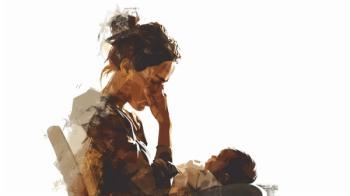
The Harms of Assisted Death Are Not Just a “Disabled Thing”
“The mere legalization of MAID creates a serious and discriminatory danger…”
This article is in response to the series, “
It is with the greatest pleasure I learn that Douglas W. Heinrichs, MD, has accorded me the honour of replying to
Dr Heinrichs
As the reader may recall, my principal argument (which Dr Heinrichs has not attempted to refute) concerns the inherently harmful effect upon the disabled and chronically ill of decriminalizing assisted suicide and euthanasia.
Simply stated: This decriminalizationrequires the selective removal of otherwise universal criminal code protections.1 The mere legalization of MAID, therefore, creates a serious and discriminatory danger. That the danger is serious, we must certainly agree. Because, otherwise, we would have no prohibition, and no need for an exception. That the danger is discriminatory, appears in the fact that its burden falls upon 1 group alone.
In addition, I have made a second claim: that this discriminatory, lethal danger, has been imposed upon the members of that group, against their will. It is instructive, in this light, to review the recently successful passage, in Canada, of Bill C-7 (2021),2 enacted to extendeuthanasia to individuals not at the end of life.
Every single one of the testimonies and briefs introduced before Parliamentary Committee,3 by disabled individuals and their organizations, was opposed to the expansion. Moreover, in a theatrically orchestrated Open Letter,4 the Vulnerable Persons Standard5 presented the signatures of no less than 147 nationally representative disabled organizations (and their allies) in opposition to the Bill.
If informed and engaged opinion are to be our guide, it can be confidently stated that the "disabled community" is unconditionally opposed to euthanasia eligibility for its members. And yet this legislation was carried, 213 votes to 106.6
What, we must ask, can possibly explain these facts?
Many of my disabled friends would point to the concept of ableism,7 a highly developed social theory of injustice based upon systemic discriminatory oppression. Others, prefer to remain within the bounds of common language, in identifying an extremely negative exterior perception of disabled life.
Whatever explanation is chosen, the essential harmsuffered by individual patients (faced with the unbridled subjectivity of individual doctors as
Sadly, also, we must remember that
1) Mere legalization creates a discriminatory danger for the nonsuicidal patient.
2) This poisoned privilege is provided contrary to majority desire. For even in the Netherlands, among terminal cancer patients—who account for 70% of all euthanasia in that country—less than 1 in 10 will consent to die in that manner.9
3) The push to "inform" all eligible patients, is a clear reflection of projected prejudice towards imperfect life.
On this point, Dr Heinrichs opens the door to a semantic rabbit-hole, where terms like "worth" are challenged in their common usage, and where it is suggested that the mystery of personal choice might permit a particular life to be terminated without implying negative judgment thereon. I will respectfully decline that discussion.
Allow me simply to conclude by reaffirming my own conviction (regardless of words or intention): that those who insist it is somehow appropriate for 1 class of persons to be deprived of criminal protections enjoyed by everyone else (and this against their clearly expressed collective wishes), would seem to have afairly settled opinion as to the pertinence of continuing such lives; an opinion, I must add, which is very different from that of the people who are actually living them.
Gordon Friesen is a disabled individual who has followed the assisted death question closely since the early 1990s, and is currently President of the
References
1. Statues of Canada: Bill C-14. An Act to amend the Criminal Code and to make related amendments to other Acts (medical assistance in dying) (2016). Accessed December 19, 2022.
2. Statues of Canada: Bill C-7. An Act to amend the Criminal Code (medical assistance in dying) (2021). Accessed December 19, 2022.
3. Standing Committee on Justice and Human Rights. House of Commons, Canada. Accessed December 19, 2022.
4. Open Letter in opposition to Bill C-7. Vulnerable Persons Standard. Accessed December 19, 2022.
5. Vulnerable Persons Standard. Accessed December 19, 2022.
6. 3rd reading and adoption of Bill C-7. An Act to amend the Criminal Code (medical assistance in dying). December 10, 2020. Accessed December 19, 2022.
7. Dr. Heidi Janz testifying before the Standing Committee on Justice and Human Rights, Parliament of Canada. November 10, 2020 (presentation at 12:19:00). Accessed December 19, 2022.
8. Friesen G. Lessons from the Canadian euthanasia debacle: utilitarian death-medicine piggy-backing on the power of choice—why (and how) to deconstruct the medical “narrative.” August 4, 2022. Accessed December 19, 2022.
9. Note on Dutch cancer patients who consent to euthanasia.
Total Dutch deaths (2020): 168,678
Dutch cancer deaths (2020): 49,008
Total Dutch euthanasia deaths (2020): 6938
Cancer euthanasia deaths (2020): 4480
Euthanasia as fraction of total deaths (2020): 0.041
Cancer deaths as fraction of total deaths: 49,008 / 168,678 = 0.29
Cancer euthanasia as fraction of total euthanasia deaths: 4480 / 6938 = 0.65
Cancer euthanasia as fraction of total deaths: 0.65 * 0.041 = 0.027
Cancer euthanasia as fraction of total cancer deaths: 0.027 / 0.29 = 0.09 “less than 1 in 10”
Newsletter
Receive trusted psychiatric news, expert analysis, and clinical insights — subscribe today to support your practice and your patients.

















